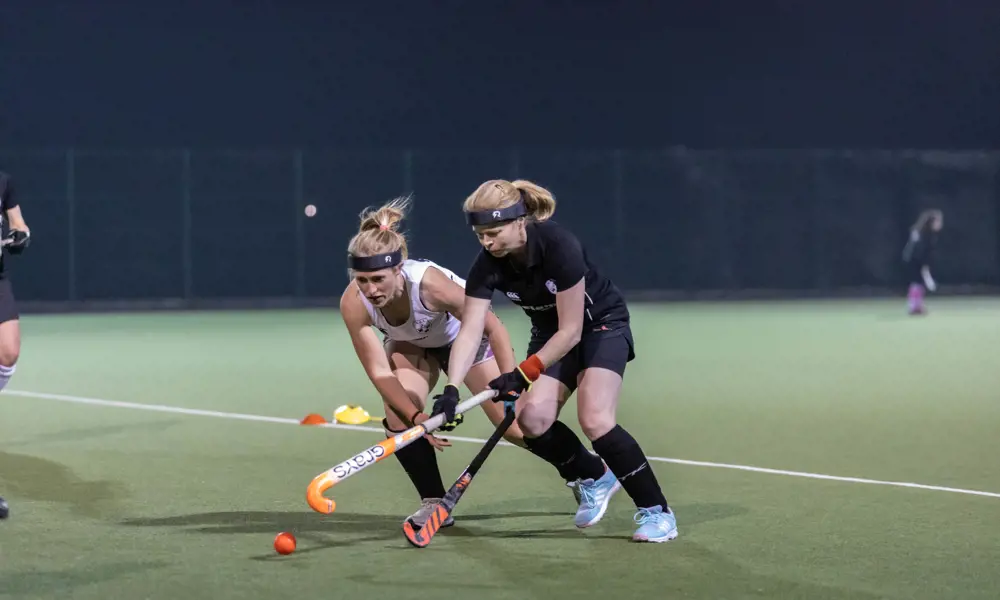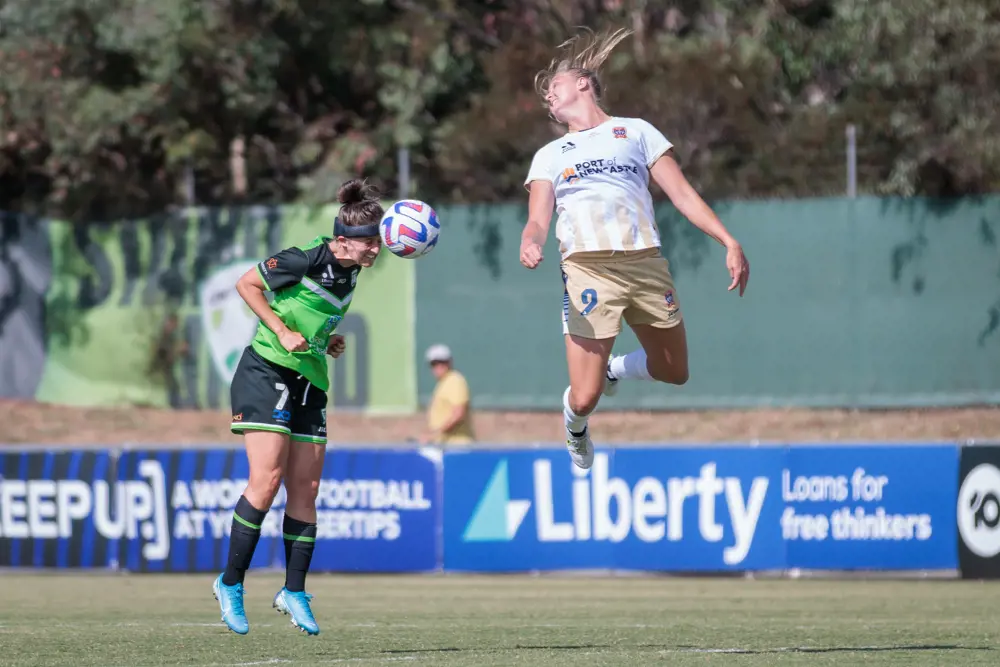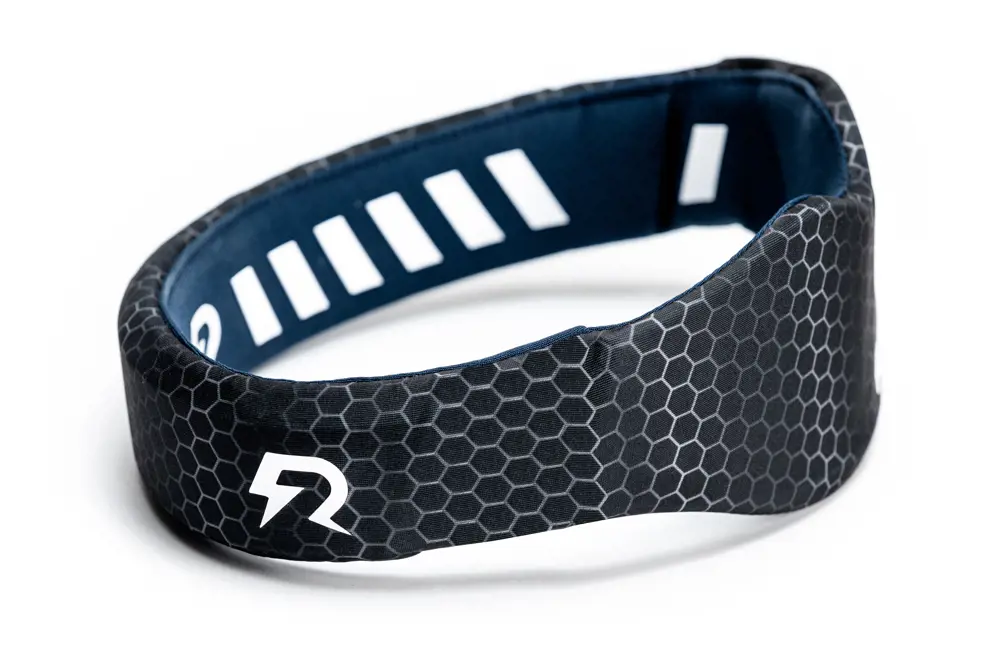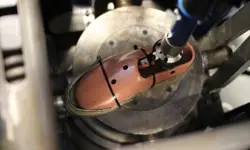
The headband reducing the risk of brain injury
“Ever since I played hockey at school, I have asked myself ‘Why do we protect shins and teeth in sport, but not the brain?’.” Thirty years later, Judith McMinn decided to answer her own question and start researching what brain-protection products were available for sports. Finding only products that offered skull and scalp protection, in 2021 she decided to develop a product to protect sportspeople’s brains.
A problem solver
Based in County Durham, Judith spent most of her career in banking and management consulting, where she focused on solving complex issues and delivering commercial change. However, that question from her schooldays stayed on her mind. “Given we can get new teeth and legs, but not a new brain then why would any player wear a shin or mouth guard and not brain protection?” she asks. “Right now, there is more regulation around protection for teeth and shins, than there is for the brain in sport.”
So, Judith assembled a team with experience across brain health, biomechanical physics, material science, garment design, and manufacturing, which then looked into ways to reduce rotational brain injury from concussive and sub-concussive head impacts in sport. “Head-worn protection in sport is typically considered in the form of helmets or headguards (scrum caps) in rugby,” Judith explains. “These are designed to protect the skull, not the brain. While a helmet effectively protects the skull from fractures, the brain instead receives the full force of the impact, resulting in concussion and sub-concussions. Ironically, helmets increase brain trauma by permitting more and heavier impacts to the brain.”

The Rezon team looked into ways to reduce the risk of rotational forces to the brain that result from head impacts © Rezon
Helmets are mostly tested against linear force reduction rather than rotational forces, which rotate the brain and shear cut off brain cells and fine blood vessels. Linear force (g-force) reduction is less relevant to reducing brain injury because it does less damage to the brain. Regular headguards are intended to only protect against cuts and abrasions, and players are encouraged to protect themselves, rather than with safety equipment. Their design also increases the risk of rotational forces to the brain; the gaps between the foam shapes create an uneven surface that allows for more rotational ‘catch points’, meaning more linear forces become rotational. And scrum cap designs tend to close or tie at the back of the head, meaning players are vulnerable to impacts received to that area and the occipital region of the brain. Scrum caps have remained unchanged in their shape and design for over 100 years.
Developing a wearable protective headband
After two years of research and development, working with global experts at the forefront of the brain health industry, Judith’s team – Rezon – developed Halos®, a protective headband that protects the brain in both concussions and sub-concussions. The headband’s nine layers of protection offer a 61% reduction in rotational forces caused by head impacts. On impact, the nine layers move over each other. When the layers move over each other they reduce the transmission, or passing through, of rotational forces to the brain, and reduce impact energy via friction. Additionally, three specific layers deform to further reduce impact. “Reducing rotational forces is significant because of the high number of sub-concussions sustained in sports (a player will likely receive thousands over each season and many thousands in a career),” explains Judith. “Reducing rotational forces from each sub-concussion from wearing Halos can lessen the risk of longer-term neurodegenerative consequences.” Those who might sustain impact to the head while playing sport are at greater risk of chronic traumatic encephalopathy (CTE), a progressive neurodegenerative disease that leads to early onset dementia. Typically, players in their 30s to 50s are diagnosed with CTE, but it is currently being diagnosed in 1 in 20 male rugby players, as well as professional and amateur players of all genders across different contact and collision sports.
Halos has been designed to be light and thin, so that it is comfortable for wearers, and can be worn across all sports, genders and ages. It is the only category II personal protective equipment (PPE) CE-marked head-worn protective of its type, and is also the first brain protection product in sport to be a registered medical device with the Medicine and Healthcare products Regulatory Agency.

© Rezon
Rezon is also challenging the narrative around brain health and protection, with brain injury currently creating a £2.45 billion economic burden a year to insurance, healthcare and other businesses in the UK. “We live in a society where the brain is taken for granted and too few understand and appreciate brain health and the need to protect the brain in sport,” Judith adds. “The biggest challenges remain education and awareness around meaningful brain protection. Many players, coaches and referees incorrectly believe protective equipment prevents concussion in rugby.” She aims to showcase knowledge and share expert insight by working with schools and sports clubs, as well as rolling out an informational and education campaign in 2024.
Halos launched in February 2022 and is sold internationally, including Hong Kong, Australia, and the US. The technology is also being prepared for integration into helmets, focusing on construction, equestrian and ski helmets. Judith has also received support from the Royal Academy of Engineering’s Regional Talent Engines programme, an accelerator scheme that offers mentoring, peer-to-peer networking and training to help businesses scale up.
From protection to detection and monitoring
Judith is now looking to develop Halos beyond protection and into brain injury detection and performance monitoring by incorporating world first in-motion electroencephalogram (EEG) nanotechnology into the headband. It would then aid the detection of elevated risk of brain injury through monitoring rotational forces to the brain, flagging up sub-concussions and when ‘safe’ thresholds on rotational forces are breached. “The EEG technology will shift performance in sport from being below the neck to what determines performance – the brain,” says Judith. “It will record brain activity and provide clinical-grade and unbiased measures and insights around player engagement, distraction, focus, fatigue and team synchrony. Truly game-changing!”
Contributors
Keep up-to-date with Ingenia for free
SubscribeRelated content
Health & medical

A gamechanger in retinal scanning
2006 MacRobert Award winner Optos rapidly became a leading medical technology company and its scanners have taken millions of retinal images worldwide. There is even a display at the Science Museum featuring the Optos development. Alastair Atkinson, of the award-winning team, describes the personal tragedy that was the trigger for the creation of Optos.

Kidney dialysis
Small haemodialysis machines have been developed that will allow more people to treat themselves at home. The SC+ system that has been developed is lighter, smaller and easier to use than existing machines.

Engineering polymath wins major award
The 2015 Queen Elizabeth Prize for Engineering has been awarded to the ground-breaking chemical engineer Dr Robert Langer FREng for his revolutionary advances and leadership in engineering at the interface between chemistry and medicine.

Blast mitigation and injury treatment
The Royal British Legion Centre for Blast Injury Studies is a world-renowned research facility based at Imperial College London. Its director, Professor Anthony Bull FREng, explains how a multidisciplinary team is helping protect, treat and rehabilitate people who are exposed to explosive forces.
Other content from Ingenia
Quick read

- Environment & sustainability
- Opinion
A young engineer’s perspective on the good, the bad and the ugly of COP27

- Environment & sustainability
- Issue 95
How do we pay for net zero technologies?
Quick read

- Transport
- Mechanical
- How I got here
Electrifying trains and STEMAZING outreach

- Civil & structural
- Environment & sustainability
- Issue 95